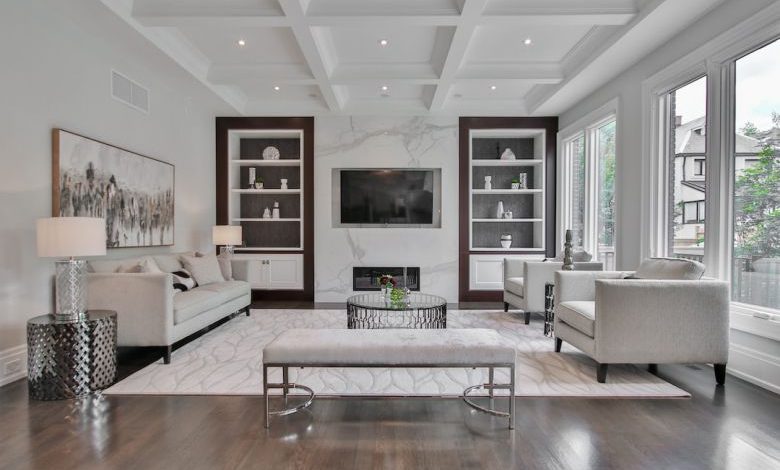How to Design a Minimalist Living Room?

Creating a minimalist living room is all about simplicity and functionality. It’s about reducing clutter, embracing clean lines, and creating a space that is calming and inviting. If you’re looking to design a minimalist living room, here are some key tips to help you achieve the perfect balance of style and simplicity.
Choose a Neutral Color Palette
When it comes to minimalist design, neutral colors are your best friend. Opt for a palette of whites, grays, and earth tones to create a calm and serene atmosphere. These colors will help to create a blank canvas that allows for other elements in the room to shine. Avoid bold or vibrant colors that can be visually overwhelming.
Declutter and Organize
One of the fundamental principles of minimalist design is to eliminate clutter. Clearing out unnecessary items and organizing your space will instantly create a cleaner and more streamlined look. Start by getting rid of anything that doesn’t serve a purpose or bring you joy. Then, find stylish storage solutions to keep your remaining belongings neatly organized and out of sight.
Invest in Quality Furniture
In a minimalist living room, each piece of furniture should have a purpose and contribute to the overall design aesthetic. Invest in high-quality furniture that is both functional and visually appealing. Look for clean lines, simple designs, and neutral colors. Avoid oversized or bulky furniture that can make the room feel cramped.
Focus on Texture
While a minimalist living room typically embraces simplicity, incorporating different textures can add depth and interest to the space. Consider adding soft throws, textured rugs, or a mixture of materials like wood, metal, and glass. These subtle details can create a warm and inviting atmosphere while still maintaining the minimalist aesthetic.
Let Natural Light In
Natural light is essential in a minimalist living room. It not only brightens up the space but also creates a sense of openness and airiness. Avoid heavy curtains or window treatments that can block the light. Instead, opt for sheer curtains or blinds that allow light to filter through while still providing privacy. If privacy is not a concern, leave the windows bare to maximize the amount of natural light that enters the room.
Choose Simple and Functional Decor
When it comes to decorating a minimalist living room, less is more. Choose a few key pieces of decor that are both stylish and functional. Avoid cluttering the space with unnecessary knick-knacks or excessive artwork. Instead, opt for a few carefully curated items that complement the overall aesthetic. Incorporate elements such as potted plants, mirrors, or minimalist wall art to add interest without overwhelming the space.
Create an Open Floor Plan
An open floor plan is a hallmark of minimalist design. It creates a sense of flow and spaciousness, making the room feel larger and more inviting. Consider removing unnecessary walls or partitions to open up the space. If removing walls is not an option, use furniture placement to create a sense of openness. Arrange furniture in a way that allows for easy movement and clear sightlines throughout the room.
Embrace Negative Space
Negative space, also known as empty or white space, is an important element in minimalist design. It refers to the areas of a room that are left intentionally empty. Embracing negative space allows the eye to rest and creates a sense of balance and harmony. Avoid overcrowding the room with furniture or decor. Instead, leave empty spaces on walls, floors, and surfaces to create a visually pleasing and calming environment.
In conclusion, designing a minimalist living room is all about simplicity, functionality, and creating a space that promotes a sense of calm and serenity. By following these tips, you can achieve a minimalist aesthetic that is both stylish and inviting. Remember to focus on neutral colors, declutter and organize, invest in quality furniture, incorporate texture, let natural light in, choose simple decor, create an open floor plan, and embrace negative space. With these principles in mind, you can create a minimalist living room that is both visually appealing and functional.




